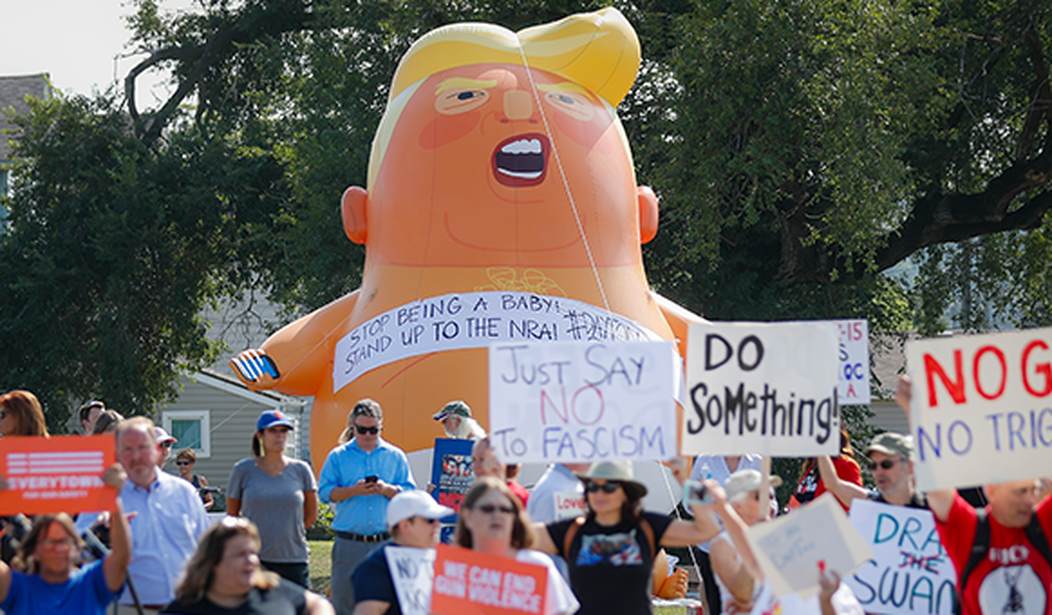Gun control advocates love to claim that gun owners are “fearmongers”. In their view the NRA “peddles fear” in order to drive up gun sales and gun ownership; either fear of being the victim of a violent crime, or the fear of more gun control. This quote from Everytown for Gun Safety’s federal media relations manager (in a HuffPost story alleging the NRA traffics in anti-Semitism) sums up the typical attack pretty well.
″[The NRA’s] leaders peddle conspiracy theories, fuel hatred and traffic in dog-whistle politics in order to incite fear and sell more guns,” Zucker said in a statement to HuffPost. “The NRA’s rhetoric has reached a dangerous new low, and Americans have had enough.”
The video’s message of”You shouldn’t have to send your child to school in a bullet resistant vest. Pass gun control and you won’t have to be afraid.” isn’t exactly subtle.
Gun control groups have tweeted about and retweeted stories of students and teachers writing out their wills in case they’re killed in a school shooting. Candidates are asked by children what they will do so that they’re not afraid to go to school anymore. The media breathlessly reports that we’ve had more mass shootings than days in the year, citing a gun control group that uses a much broader definition of the term than the FBI does. Americans routinely think that crime is going up when it’s actually going down, and that active assailant attacks are increasing though the leading researcher into these types of attacks says that’s not the case, thanks in large part to grossly misleading media coverage.

This infographic from Our World In Data is a great visual example of how the media drives fear of active assailant attacks. All homicides make up less than 1% of deaths in the United States, and active assailant attacks make up less than 1% of all homicides. This doesn’t make them less horrific when they occur. In fact because they are so rare we feel the same raw rush of emotions each and every time. Our social media feeds may become flooded with unedited video taken by eyewitnesses at the scene, or tweets from individuals who can hear the gunshots from inside a locked closet or classroom and are rightfully terrified. Our own adrenaline starts pumping. Our own fight or flight reflex kicks in. All of this is understandable, but the fact that the media and gun control groups attempt to manipulate that emotional response is still in-excusable.
And now the Columbia Journalism Review is teaming up with Michael Bloomberg’s gun control news outfit The Trace to develop guidelines on how to cover active assailant attacks. That in and of itself isn’t an issue. Neither is their stated belief that news coverage that turns these killers into celebrities can lead to copycat attacks. They’re right. But the issue goes far beyond how other potential killers might respond to this media coverage. It’s about how the American people respond as well, and one thing that the initial statement by CJR fails to recommend is greater context for these types of rare events in media coverage. Their goal is to try to develop coverage that doesn’t provide infamy to these killers. That’s a good goal, but they need to go beyond that. They should be developing strategies to cover these types of events in a way that will inform viewers, not cause them to panic.
Unfortunately, fear sells in the news business, just as it works for gun control advocates. A nation that is terrified about guns because crime involving firearms dominates the news is more likely to want more gun laws, particularly when politicians and anti-gun groups claim we can “end gun violence” if only we find the courage to pass these laws. The politics of fear isn’t going away anytime soon, unfortunately. It’s far too valuable a tool for gun control groups and the media to give it up. Panic is a small price to pay for high ratings and legislative victories, apparently.









Join the conversation as a VIP Member